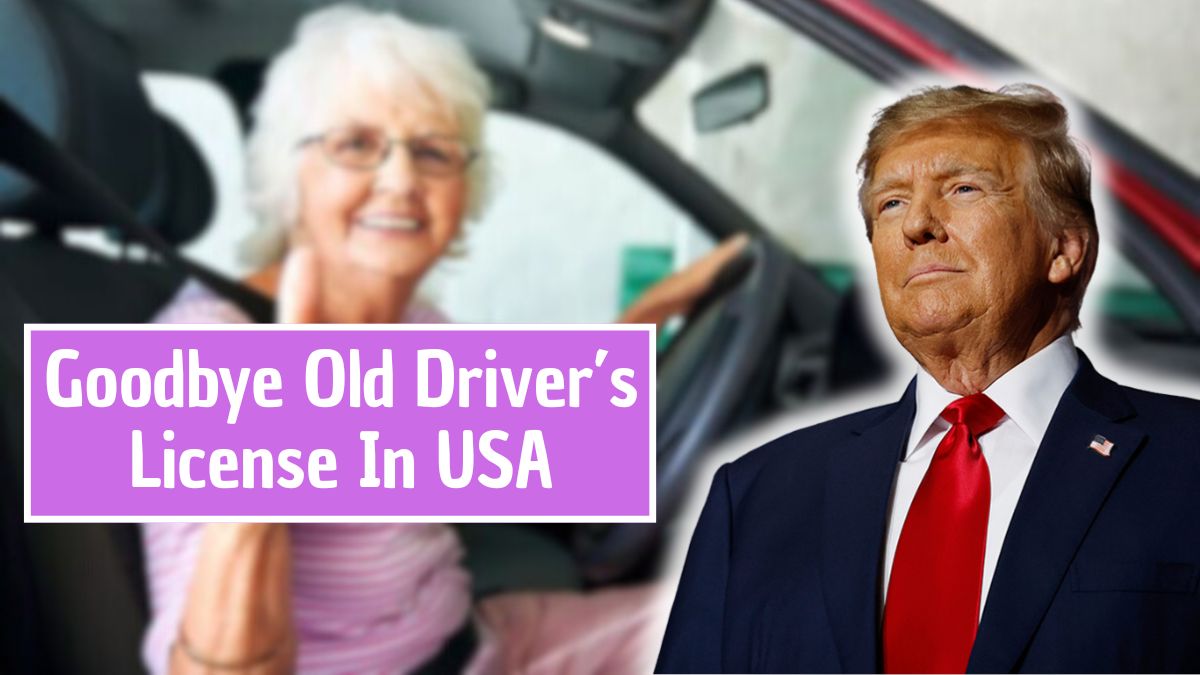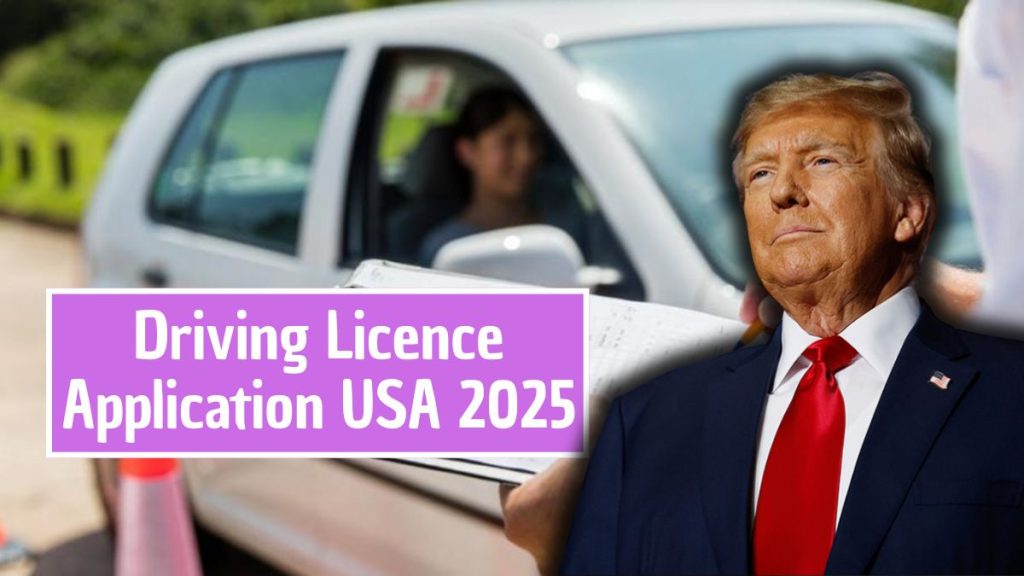The United States is officially saying “Goodbye” to old driver’s licenses as the government moves toward the nationwide adoption of REAL ID-compliant identification. Beginning May 7, 2025, citizens will no longer be able to use outdated licenses for domestic flights or entry into federal buildings.
This reform, led by the U.S. Department of Homeland Security (DHS), aims to make driver’s licenses more secure and harder to forge. For millions of Americans, the transition means updating their credentials at their local Department of Motor Vehicles (DMV) before the deadline—or facing travel restrictions, fines, and limited access to federal facilities.
Why the U.S. Is Phasing Out Old Driver’s Licenses

Old driver’s licenses are no longer considered safe enough for the digital and security needs of modern America. Many of the older versions lack advanced anti-counterfeit features, making them vulnerable to fraud and identity theft.
The introduction of the REAL ID Act, passed in 2005, was a direct response to national security concerns following the 9/11 attacks. Its goal is to standardize ID security across all states, ensuring that every issued license meets federal verification requirements.
By enforcing these rules, the U.S. aims to protect citizens’ identities, enhance airport security, and build a stronger digital foundation for future ID systems.
Overview of the Goodbye Old Driver’s License Transition
| Managing Authority | State Departments of Motor Vehicles (DMVs) |
|---|---|
| Department | U.S. Department of Homeland Security |
| Program Name | REAL ID Act Implementation |
| Cost Range | $25–$75 (varies by state) |
| Application Method | In-person at DMV offices |
| Eligible Group | All U.S. drivers with old licenses |
| Penalty for Non-Compliance | Up to $500 fine, no domestic flights |
| Official Website | tsa.gov/real-id |
The nationwide effort is part of a broader initiative to ensure that every driver’s license issued in the U.S. meets federal identity verification standards by May 2025.
Understanding the REAL ID Act and Its Requirements
The REAL ID Act, established in 2005, sets uniform security standards for issuing driver’s licenses and identification cards. A REAL ID-compliant card features:
- A star symbol on the top corner, indicating federal approval.
- Advanced security elements to prevent duplication or forgery.
- Strict identity verification at the time of application.
From May 7, 2025, individuals must present a REAL ID or a valid alternative (such as a U.S. passport) to:
- Board domestic flights within the U.S.
- Enter federal or military buildings.
- Access restricted government facilities.
Without a REAL ID, travelers and workers may find themselves barred from entry to secure federal locations or unable to pass airport security checks.
Consequences of Not Updating Your Driver’s License
Failing to switch to a REAL ID before the deadline can lead to multiple consequences, including:
- Fines up to $500 for using an invalid ID.
- Inability to fly domestically within the U.S. without a passport.
- Restricted access to government agencies and federal buildings.
- Legal issues during identification checks by law enforcement.
For frequent travelers or government employees, the failure to upgrade could cause serious disruptions to daily activities.
How to Apply for a REAL ID
The process to obtain a REAL ID is simple but must be done in person. Follow these steps carefully:
Step 1: Gather Required Documents
Bring the following documents to your DMV appointment:
- Proof of identity (U.S. passport or birth certificate).
- Proof of Social Security Number (Social Security card, W-2, or tax form).
- Proof of address (utility bill, lease agreement, or bank statement).
- Your current driver’s license.
Ensure all documents are originals, not photocopies.
Step 2: Book an Appointment
Visit your state’s DMV website and schedule an appointment. Arriving early is advised, as demand increases near the deadline.
Step 3: Fill Out the Application Form
Complete the form provided by the DMV, confirming your identity, address, and citizenship status.
Step 4: Pay the Fee and Take a Photo
Fees vary between $25 and $75 depending on the state. A new photo will be taken for your updated card.
Step 5: Receive Your REAL ID
Once approved, your new REAL ID-compliant driver’s license will be mailed to you within a few weeks.
Federal Deadline and State Compliance Dates
All states must comply with the federal May 7, 2025 deadline. After this date, non-REAL ID licenses will no longer be accepted for travel or identification in federal facilities.
| State | Deadline | Fine Risk |
|---|---|---|
| California | May 7, 2025 | Up to $500 |
| Texas | May 7, 2025 | Up to $500 |
| Florida | May 7, 2025 | Up to $500 |
| New York | May 7, 2025 | Up to $500 |
Drivers in every state are strongly urged to update their IDs early to avoid last-minute congestion at DMV offices.
Common Mistakes to Avoid When Applying
Avoiding small mistakes can save you time, money, and frustration. Here are the most frequent errors applicants make:
- Waiting until the last minute (DMVs get crowded close to the deadline).
- Using photocopies instead of original documents.
- Providing only one proof of address (some states require two).
- Assuming a passport alone is enough — it replaces but doesn’t update your driver’s license.
Plan ahead to make the transition smooth and stress-free.
The Rise of Digital and Mobile Driver’s Licenses (mDLs)
Several U.S. states are going beyond the physical card format, introducing digital driver’s licenses (mDLs) accessible via smartphones.
States like Arizona, Maryland, and Colorado have begun pilot programs allowing residents to display their driver’s license through secure mobile apps. These digital versions provide the same verification level as physical REAL IDs while being easier to carry and update.
Digital IDs may soon become the future standard nationwide, aligning with the federal government’s push for secure and tech-friendly identification systems.
Benefits of the REAL ID System
The REAL ID transition is about more than compliance—it’s a step toward safer, smarter identity verification. Key advantages include:
- Reduced identity theft through advanced card encryption.
- Streamlined airport security checks and faster travel verification.
- Enhanced access control for federal buildings.
- Greater nationwide consistency across state-issued IDs.
These improvements aim to create a uniform, trustworthy ID system that citizens and institutions can rely on across the U.S.
What Happens After the Transition
Once the REAL ID system becomes mandatory, old licenses will be officially invalidated for federal purposes.
However, they will still function as regular IDs for non-federal uses like:
- Driving and local identification.
- Accessing private facilities.
- Verifying identity for age-restricted purchases.
Still, the government encourages everyone to upgrade as early as possible to ensure full access to federal and travel services.
Preparing for the Deadline
With less than a year to go, millions of Americans have yet to switch to REAL ID. The Department of Homeland Security warns that waiting until spring 2025 could lead to major delays.
To avoid problems:
- Schedule a DMV appointment immediately.
- Gather your documents early.
- Double-check your state’s specific REAL ID requirements online.
Procrastination could result in travel disruptions and administrative complications.
FAQs About the REAL ID Transition
Q1. What is a REAL ID?
A REAL ID is a federally approved driver’s license or ID card that meets enhanced security standards for travel and identification within the U.S.
Q2. When does the REAL ID requirement begin?
Starting May 7, 2025, you will need a REAL ID or valid passport to board domestic flights or enter federal buildings.
Q3. Can I still use my old driver’s license?
After the deadline, old licenses will remain valid for driving and local ID use but not for air travel or federal access.
Q4. How much does a REAL ID cost?
Fees vary by state but generally range between $25 and $75.
Q5. What happens if I don’t update my ID?
You could face fines, be denied access to flights, or have difficulty entering secure government facilities.









